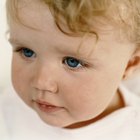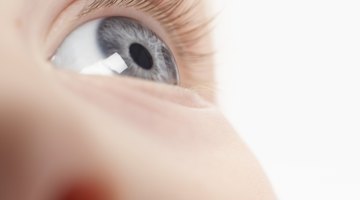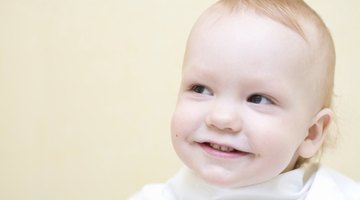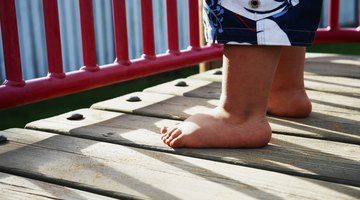Moles & Freckles on Toddlers
Having a sprinkling of freckles across the nose is a cute look for toddlers, but you might not consider moles quite so adorable.
Neither freckles nor moles are dangerous in the majority of cases. However, if your toddler has moles, watch them for changes -- and ask your pediatrician to look at them if you have concerns.
Freckle Causes
Freckles are thought to develop as a result of a combination of genetic tendency and sun exposure, according to an article by Gary W. Cole, MD, FAAD on the MedicineNet website. So if you're a freckle-face, your toddler is more likely to be one, too. Freckles occur when melanin, the substance that gives skin its color, is distributed unevenly in the skin.
Melanin production increases with sun exposure, which is why freckles often first appear in the summer.
Toddlers can start to develop freckles around age 1 to 2.
If your little one has fair skin and red or blond hair, he's more likely to sprout freckles. Being generous and diligent with sunblock can help reduce freckling.
Mole Causes

Ridges in Fingernails in Babies
Learn More
Moles don't have the cuteness factor that freckles often do, but the tendency to develop moles is also genetic. Moles occur when melanocytes, the cells that produce melanin, cluster together. Nearly everyone has moles. About 10 percent of kids are born with moles -- and by the time your kiddo reaches adulthood, he'll probably have between 12 and 20 moles, according to the American Academy of Dermatology. A mole larger than 8 inches is called giant nevus. Moles often grow as a child grows, but they should grow symmetrically.
Freckle Risks
Most freckles darken in the summer, when kids are outside in the sun -- and then lighten in the winter. A freckle rarely develops into a skin cancer, but people with freckles do have a higher risk of developing skin cancer than those who don't.
Freckles in the groin area or in the armpits might indicate that you child has neurofibromatosis 1, a genetic condition that affects around 1 in 3,000 people, according to Children's Hospital St. Louis. Speak to your pediatrician if your child develops freckles in these areas.
Mole Risks

White Bumps on My Toddler's Nose
Learn More
Most moles are benign, or non-cancerous, but around 500 kids each year are diagnosed with melanoma, or skin cancer, pediatrician Dr. Vincent Iannelli explains on his website, KeepKidsHealthy.
Suspicious moles generally aren't symmetrical, have irregular borders, are bigger than the eraser on a pencil and don't have a uniform color. Moles that itch, bleed, tingle or ooze also deserve prompt evaluation from your pediatrician.











